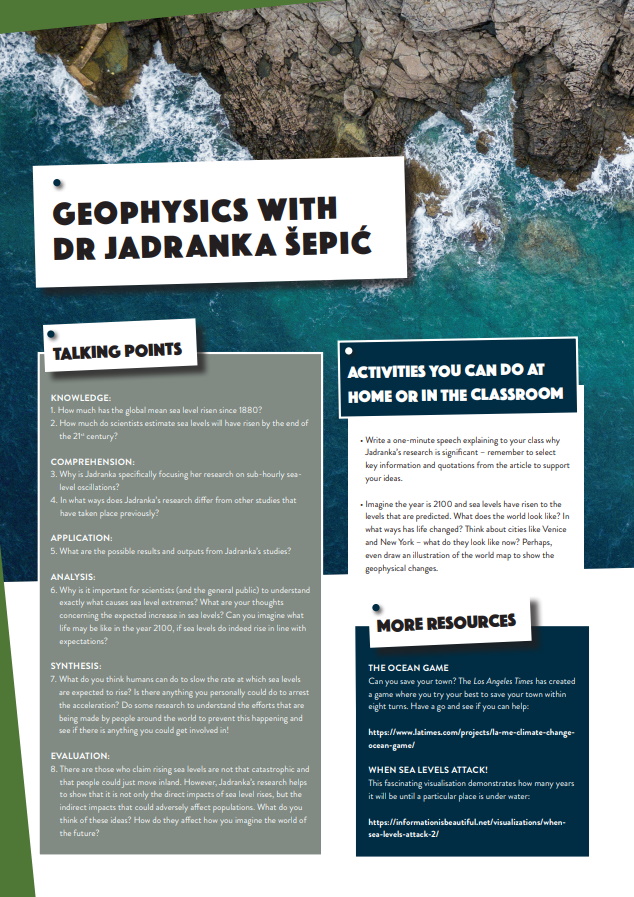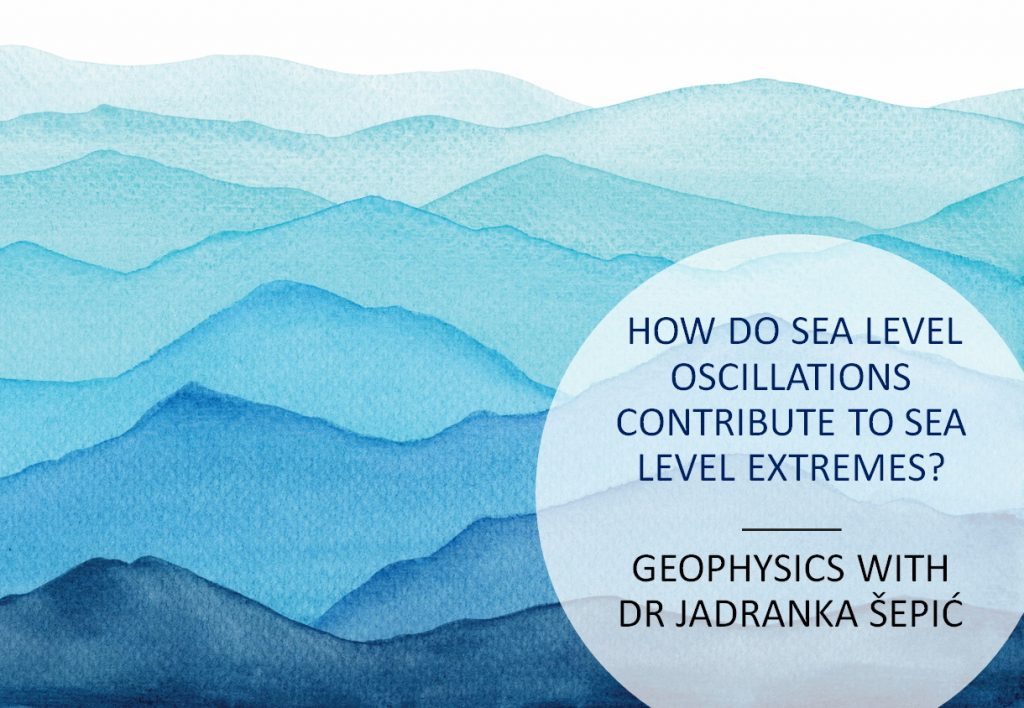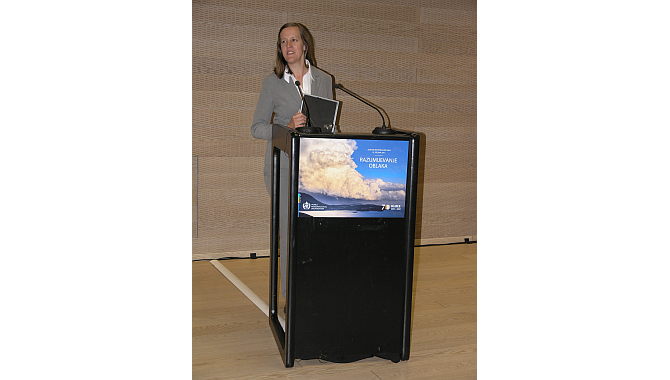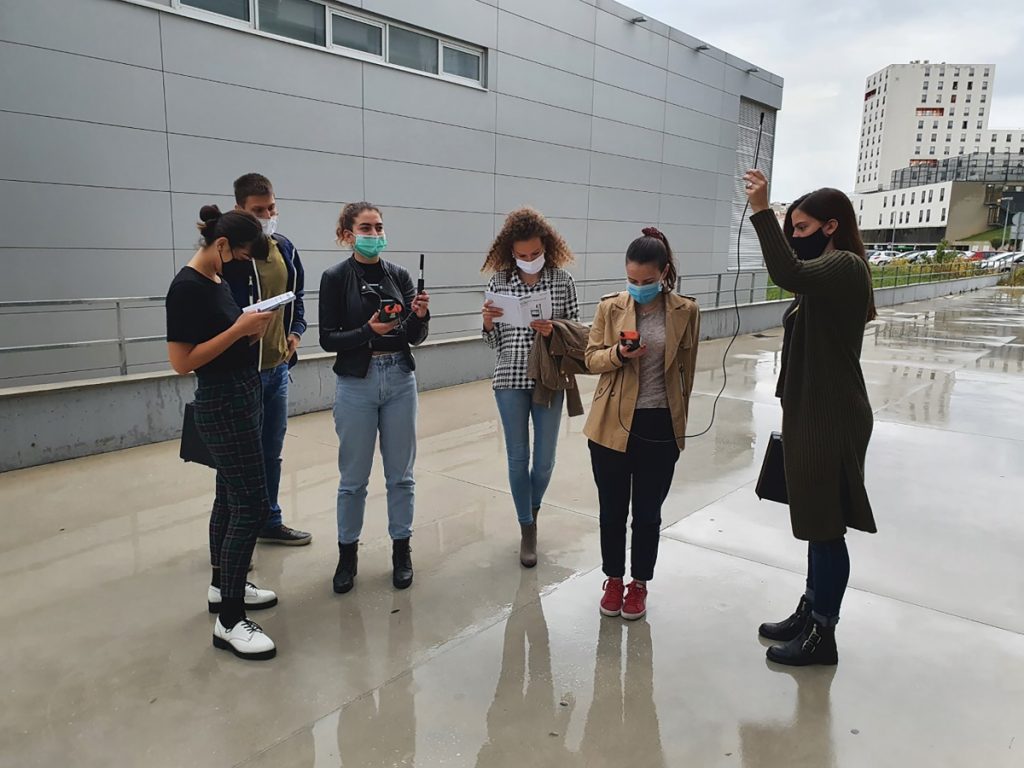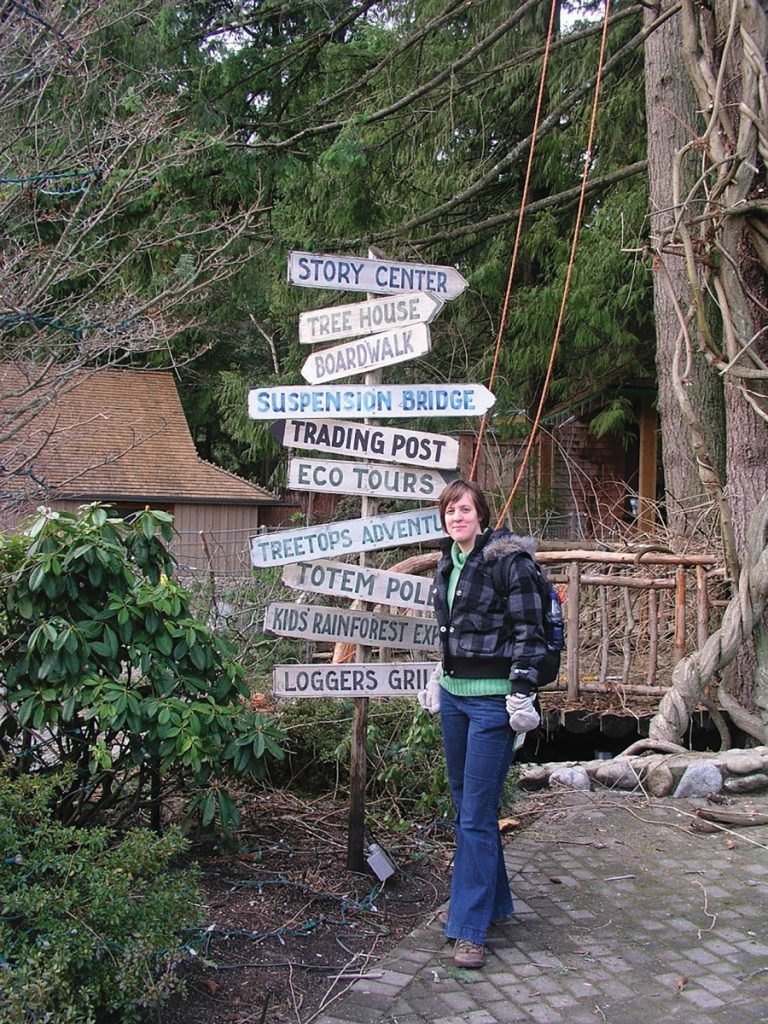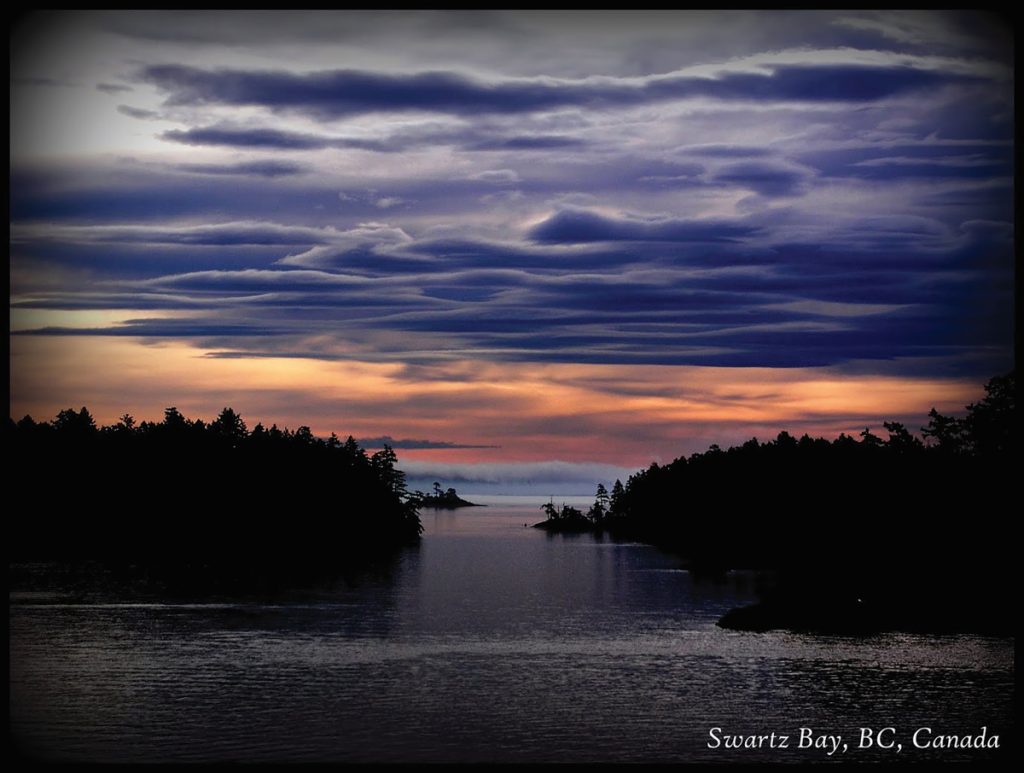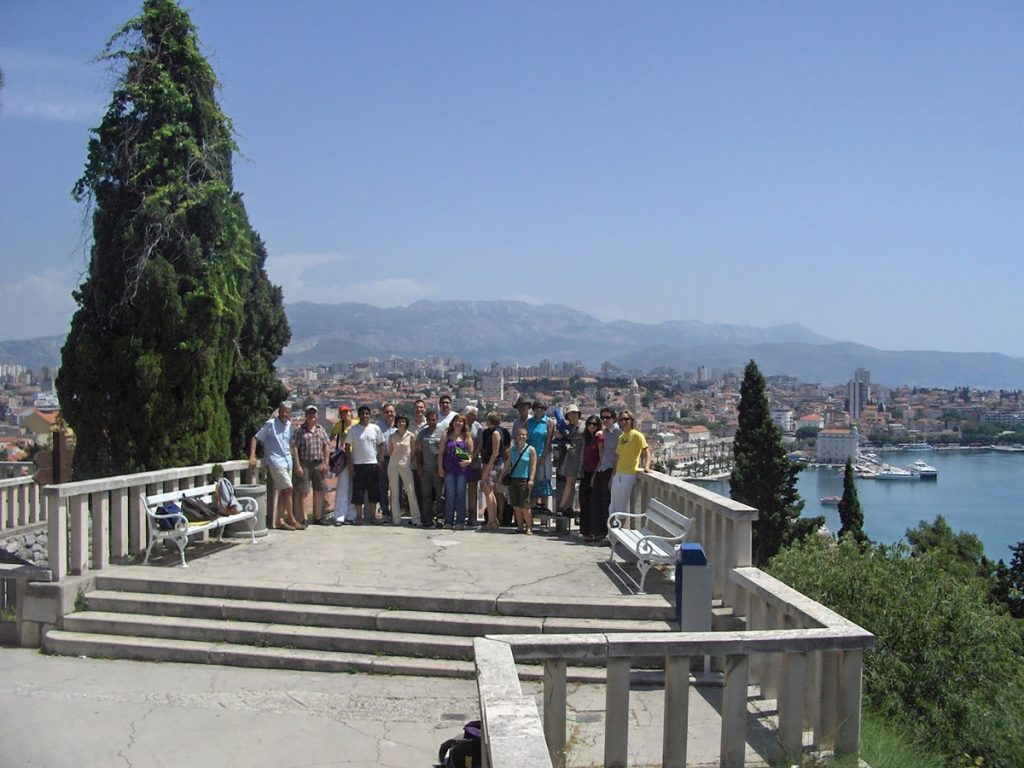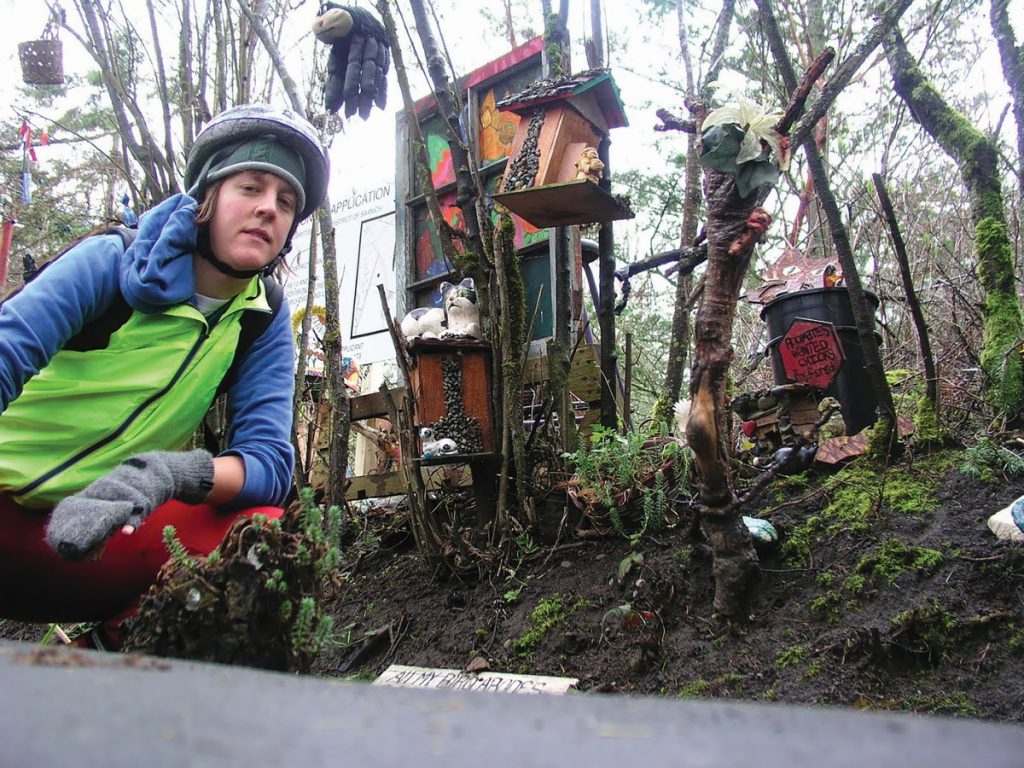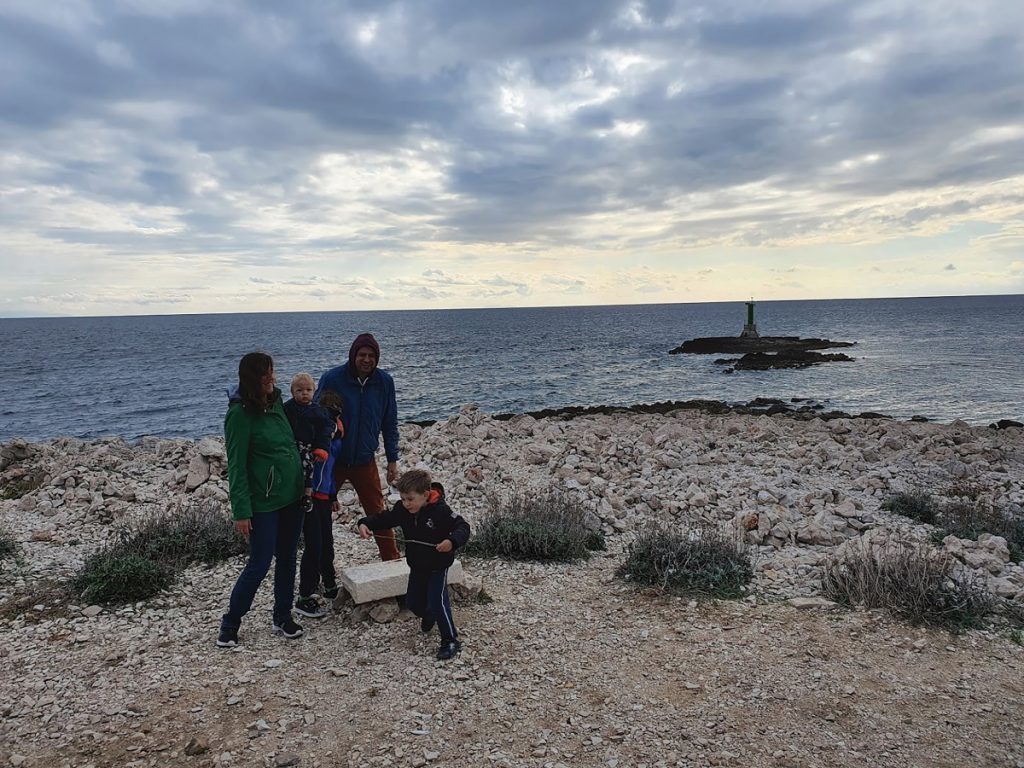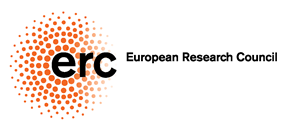How do sea level oscillations contribute to sea level extremes?
Dr Jadranka Šepić forms part of a geophysics team based at the University of Split in Croatia. Her work is primarily focused on understanding which areas are at the greatest risk of sea level oscillations – a risk which will become heightened in the future as sea levels rise
TALK LIKE A GEOPHYSICIST
ATMOSPHERIC GRAVITY WAVE – a wave caused when gravity force acts on atmospheric particles displaced from their equilibrium position
EXTREME SEA LEVELS – sea level that is higher than 99.95% of sea levels measured at a specific location. This can be 1 metre at some stations to more than 16 metres at others
MEAN SEA LEVEL (MSL) – the average level of the surface of one or more of Earth’s seas
MELTWATER – water formed by melted snow and ice
METEOROLOGICAL – relating to the science of the atmosphere and weather
SEA LEVEL OSCILLATIONS – variations to the average level of a sea’s surface
SEISMIC – related to earthquakes and other movements of the Earth’s crust
STORM SURGE – rising of the sea level as a result of the atmospheric pressure changes and strong on-shore winds within a storm (hurricane/ cyclone/typhoon)
SUB-HOURLY SEA LEVEL OSCILLATIONS – variations to the sea level that occur at shorter periods than an hour
Since 1880, the global mean sea level has risen by between 21 and 24 centimetres, with approximately one-third of that happening in the last 25 years. The rising water level around the world is largely a result of meltwater, which is produced as glaciers and ice sheets melt – something which is happening more and more as temperatures rise due to global warming and climate change.
Alarmingly, the rate at which sea levels are rising is accelerating and a bad problem is becoming worse; it is estimated that by the year 2100, mean sea level will rise between 40 and 60 centimetres worldwide. And the problems do not stop there. Higher mean sea levels will likely lead to an increase in flood risks that are associated with extreme sea levels (ESL), which are sporadic, short-lasting episodes of sea level rises due to passing hurricanes, cyclones, smaller atmospheric disturbances or submarine earthquakes (which, in turn, generate tsunamis).
Hurricane Katrina, which occurred in August 2005, caused catastrophic damage, particularly to New Orleans, as the storm surge reached more than 9 metres. That disaster occurred at present-day sea levels, so consider how much worse it would have been if it had occurred at future-day mean sea levels. In addition, it is estimated that for the coasts of Europe, the types of floods that currently occur once a century will occur once every one to three years – and this is all because of the expected mean sea level rise.
It is with these issues in mind that Dr Jadranka Šepić is conducting research focused on improving our understanding of contributors to ESLs. Based at the University of Split in Croatia, Jadranka forms part of a team that is studying the contribution of sub-hourly sea level oscillations to ESLs along the European coast.
WHY IS IT NECESSARY TO STUDY THESE ASPECTS OF ESLS?
Jadranka’s project is entitled ‘Estimating contribution of sub-hourly sea level oscillations to overall sea level extremes in changing climate’ (SHExtreme) and is expected to fill in some important knowledge gaps in our understanding of this area. “When we are talking about flooding, contribution of hourly (or longer) sea level changes to ESLs has been extensively researched so far. However, due to previously insufficient measurement time steps of sea level instruments (tide gauges), contribution of sub-hourly sea-level oscillations has been investigated only sporadically,” explains Jadranka. “Recently, these sub-hourly sea-level oscillations have started to attract a lot of scientific interest – mostly due to the strongest of these events, so called meteorological tsunamis, which can reach hazardous levels, generate significant material damage, and even endanger human lives, much like seismic tsunamis.”
Up until now, the majority of studies have looked at sporadic episodes of extreme sub-hourly sea-level oscillations; what the scientific community is lacking are detailed statistical studies of contributions of these oscillations to overall sea level extremes. Jadranka and her colleagues hope to provide this information through their research.
WHAT TYPES OF DATA WILL JADRANKA BE COLLECTING AND HOW?
In order to collect the vast amounts of data relating to the sea level changes which occur at minute time scale, Jadranka’s first challenge is to establish collaborations with scientists from a host of European countries. Once this has been done, the challenge is to carefully check the data and remove the unreliable measurements (of which there are bound to be some in a study this comprehensive). “We will collect sea level data measured with a one-minute time step, where possible. These data are partly available online and we will partly acquire them through collaboration with the European research institutions and scientists,” says Jadranka. “We will also use atmospheric pressure and wind measurements which can be obtained through collaboration with national weather services. Further on, we will use atmospheric and ocean reanalysis data (numerical weather and ocean predictions of past conditions), as well as climate simulations of future atmospheric and ocean conditions.”
After that, the team will work hard to analyse the data, where it will look for patterns, try to understand the underlying mechanisms of ESL episodes and, finally, present its findings to the public and wider scientific community.
WHAT DOES THE TEAM ALREADY KNOW ABOUT SUB-HOURLY ESLS?
In some parts of Europe, such as in the Mediterranean, sub-hourly ESLs are related to atmospheric gravity waves, which are actual waves in the atmosphere which resemble the waves in the sea, but because they are in the air we cannot see them. However, it is possible to measure them, so we know that they are there. “Atmospheric gravity waves happen when a strong wind in a moist air mass blows over a calmer, drier air mass below it, thus generating waves in the lower air mass which can propagate all the way to the sea and generate long tsunami-like waves there,” explains Jadranka. “This is similar to wind in the atmosphere blowing over the sea and generating ocean waves.”
WHAT IMPACT WILL JADRANKA’S RESEARCH HAVE?
While Jadranka’s research will not actually affect our ability to ensure that sea levels do not rise at the rate that is expected (we have to rely on other scientific fields for that), there is real hope that the outputs from her studies will result in increased awareness that these sea level oscillations do, indeed, present a substantial danger and can cause great material damage and endanger human lives. It is Jadranka’s hope that tools will be developed that will allow for timely warnings which will save untold lives and restrict the devastating impact these events could have in the future.
 DR JADRANKA ŠEPIĆ
DR JADRANKA ŠEPIĆ
Department of Physics, Faculty of Science, University of Split, Croatia
FIELD OF RESEARCH: Geophysics and Physical Oceanography
RESEARCH PROJECT: Jadranka’s project aims to discover which parts of the European coast are especially endangered by sub-hourly sea level oscillations. In addition, she wants to understand what processes in the atmosphere generate these dangerous oscillations.
FUNDERS: European Research Council
Geophysics is a field of science that is concerned with working to understand the physical aspects of our planet. Geophysicists use a range of tools and methods to aid their work and rely on distinct (though related) scientific areas, including magnetic, electrical and seismic studies. Many geophysicists work for oil and gas companies, with concerted efforts worldwide working to discover petroleum, but you are not obliged to work for such industries – there are a wealth of opportunities in environmental agencies if that is more aligned to your interests.
Reference
https://doi.org/10.33424/FUTURUM129
TALK LIKE A GEOPHYSICIST
ATMOSPHERIC GRAVITY WAVE – a wave caused when gravity force acts on atmospheric particles displaced from their equilibrium position
EXTREME SEA LEVELS – sea level that is higher than 99.95% of sea levels measured at a specific location. This can be 1 metre at some stations to more than 16 metres at others
MEAN SEA LEVEL (MSL) – the average level of the surface of one or more of Earth’s seas
MELTWATER – water formed by melted snow and ice
METEOROLOGICAL – relating to the science of the atmosphere and weather
SEA LEVEL OSCILLATIONS – variations to the average level of a sea’s surface
SEISMIC – related to earthquakes and other movements of the Earth’s crust
STORM SURGE – rising of the sea level as a result of the atmospheric pressure changes and strong on-shore winds within a storm (hurricane/ cyclone/typhoon)
SUB-HOURLY SEA LEVEL OSCILLATIONS – variations to the sea level that occur at shorter periods than an hour
Since 1880, the global mean sea level has risen by between 21 and 24 centimetres, with approximately one-third of that happening in the last 25 years. The rising water level around the world is largely a result of meltwater, which is produced as glaciers and ice sheets melt – something which is happening more and more as temperatures rise due to global warming and climate change.
Alarmingly, the rate at which sea levels are rising is accelerating and a bad problem is becoming worse; it is estimated that by the year 2100, mean sea level will rise between 40 and 60 centimetres worldwide. And the problems do not stop there. Higher mean sea levels will likely lead to an increase in flood risks that are associated with extreme sea levels (ESL), which are sporadic, short-lasting episodes of sea level rises due to passing hurricanes, cyclones, smaller atmospheric disturbances or submarine earthquakes (which, in turn, generate tsunamis).
Hurricane Katrina, which occurred in August 2005, caused catastrophic damage, particularly to New Orleans, as the storm surge reached more than 9 metres. That disaster occurred at present-day sea levels, so consider how much worse it would have been if it had occurred at future-day mean sea levels. In addition, it is estimated that for the coasts of Europe, the types of floods that currently occur once a century will occur once every one to three years – and this is all because of the expected mean sea level rise.
It is with these issues in mind that Dr Jadranka Šepić is conducting research focused on improving our understanding of contributors to ESLs. Based at the University of Split in Croatia, Jadranka forms part of a team that is studying the contribution of sub-hourly sea level oscillations to ESLs along the European coast.
WHY IS IT NECESSARY TO STUDY THESE ASPECTS OF ESLS?
Jadranka’s project is entitled ‘Estimating contribution of sub-hourly sea level oscillations to overall sea level extremes in changing climate’ (SHExtreme) and is expected to fill in some important knowledge gaps in our understanding of this area. “When we are talking about flooding, contribution of hourly (or longer) sea level changes to ESLs has been extensively researched so far. However, due to previously insufficient measurement time steps of sea level instruments (tide gauges), contribution of sub-hourly sea-level oscillations has been investigated only sporadically,” explains Jadranka. “Recently, these sub-hourly sea-level oscillations have started to attract a lot of scientific interest – mostly due to the strongest of these events, so called meteorological tsunamis, which can reach hazardous levels, generate significant material damage, and even endanger human lives, much like seismic tsunamis.”
Up until now, the majority of studies have looked at sporadic episodes of extreme sub-hourly sea-level oscillations; what the scientific community is lacking are detailed statistical studies of contributions of these oscillations to overall sea level extremes. Jadranka and her colleagues hope to provide this information through their research.
WHAT TYPES OF DATA WILL JADRANKA BE COLLECTING AND HOW?
In order to collect the vast amounts of data relating to the sea level changes which occur at minute time scale, Jadranka’s first challenge is to establish collaborations with scientists from a host of European countries. Once this has been done, the challenge is to carefully check the data and remove the unreliable measurements (of which there are bound to be some in a study this comprehensive). “We will collect sea level data measured with a one-minute time step, where possible. These data are partly available online and we will partly acquire them through collaboration with the European research institutions and scientists,” says Jadranka. “We will also use atmospheric pressure and wind measurements which can be obtained through collaboration with national weather services. Further on, we will use atmospheric and ocean reanalysis data (numerical weather and ocean predictions of past conditions), as well as climate simulations of future atmospheric and ocean conditions.”
After that, the team will work hard to analyse the data, where it will look for patterns, try to understand the underlying mechanisms of ESL episodes and, finally, present its findings to the public and wider scientific community.
WHAT DOES THE TEAM ALREADY KNOW ABOUT SUB-HOURLY ESLS?
In some parts of Europe, such as in the Mediterranean, sub-hourly ESLs are related to atmospheric gravity waves, which are actual waves in the atmosphere which resemble the waves in the sea, but because they are in the air we cannot see them. However, it is possible to measure them, so we know that they are there. “Atmospheric gravity waves happen when a strong wind in a moist air mass blows over a calmer, drier air mass below it, thus generating waves in the lower air mass which can propagate all the way to the sea and generate long tsunami-like waves there,” explains Jadranka. “This is similar to wind in the atmosphere blowing over the sea and generating ocean waves.”
WHAT IMPACT WILL JADRANKA’S RESEARCH HAVE?
While Jadranka’s research will not actually affect our ability to ensure that sea levels do not rise at the rate that is expected (we have to rely on other scientific fields for that), there is real hope that the outputs from her studies will result in increased awareness that these sea level oscillations do, indeed, present a substantial danger and can cause great material damage and endanger human lives. It is Jadranka’s hope that tools will be developed that will allow for timely warnings which will save untold lives and restrict the devastating impact these events could have in the future.
 DR JADRANKA ŠEPIĆ
DR JADRANKA ŠEPIĆ
Department of Physics, Faculty of Science, University of Split, Croatia
FIELD OF RESEARCH: Geophysics and Physical Oceanography
RESEARCH PROJECT: Jadranka’s project aims to discover which parts of the European coast are especially endangered by sub-hourly sea level oscillations. In addition, she wants to understand what processes in the atmosphere generate these dangerous oscillations.
FUNDERS: European Research Council
Geophysics is a field of science that is concerned with working to understand the physical aspects of our planet. Geophysicists use a range of tools and methods to aid their work and rely on distinct (though related) scientific areas, including magnetic, electrical and seismic studies. Many geophysicists work for oil and gas companies, with concerted efforts worldwide working to discover petroleum, but you are not obliged to work for such industries – there are a wealth of opportunities in environmental agencies if that is more aligned to your interests.
As Jadranka’s research shows, it is possible for geophysicists to dedicate their academic lives to finding a means of helping humanity overcome some of the challenges related to global warming and the resultant climate change. Ultimately, you can expect to be working on creating a picture of our planet, of what is happening below the surface of the Earth, or even what is happening to sea levels (as is the case with Jadranka’s studies).
WHAT DOES JADRANKA FIND REWARDING ABOUT HER RESEARCH?
For Jadranka, the most rewarding aspects of her studies revolve around working on discovering something new. Of course, being alongside colleagues throughout her investigations enables her to discuss these discoveries at length, conversations that are engaged with like-minded people who share her passions and enthusiasms. “The thing I like most about the process of discovery is that how, through the involvement of different people, the research broadens and becomes better,” explains Jadranka. “I love how everyone contributes, even if only a tiny bit, and as a result we can gather something that is new and interesting.”
Researchers tend to be motivated by a love of their field and a desire to solve problems, but recognition of their hard work is always appreciated. Jadranka was granted such an accolade in 2019 when she received the NH Division Outstanding Early Career Scientist Award for ‘fundamental contributions to the research on meteorological tsunamis and high-frequency sea level oscillations’. The award meant a lot to her, both personally and professionally, and is clearly a recognition for the important work that she continues to conduct to this day.
WHAT ISSUES CAN I EXPECT TO FACE AS A GEOPHYSICIST IN THE FUTURE?
It will hardly come as a surprise that one of the main issues facing all of us – climate change – is something that will have to be addressed by the next generation of geophysicists. We have all come to appreciate how global warming is impacting on oceans, weather processes and systems, and the work of geophysicists will become increasingly important as we work to understand the impacts of human activity. “Rising sea levels will obviously attract a lot of scientific interest in the future,” says Jadranka. “There are so many questions that will need answering: how much will sea levels rise? What will happen with the Antarctica and Greenland ice sheets? Will they melt? If so, how fast will they melt? Is there a way of stopping this? How extreme will the new extremes be?”
HOW TO BECOME A GEOPHYSICIST
• The Geological Society is a brilliant resource for those interested in pursuing a career in the field: https://www.geolsoc.org.uk
• The British Geographical Association contains a plethora of information regarding geophysics. Take a look through the site to get a real feel for what is happening in the field: https://geophysics.org.uk
• Starting salaries for geophysicists typically range from £28,000 to £35,000, depending on your level of qualifications and experience. Those at a more senior level range from £40,000 to £75,000 per year.
PATHWAY FROM SCHOOL TO GEOPHYSICS
Jadranka suggests that you begin by taking a lot of courses in general physics and mathematics and try to incorporate some geography if you can. “Later, taking more specialised courses in physical oceanography and meteorology will help,” explains Jadranka. “Seismology is also part of the geophysics study area, so make sure you check out those courses as well.”
Relevant degree subjects include physics, mathematics, applied sciences and engineering. A postgraduate qualification in a relevant course, such as a master’s degree in geophysics or geoscience (or a PhD), may improve your employment prospects and enhance your salary.
https://www.prospects.ac.uk/job-profiles/geophysicist
HOW DID JADRANKA BECOME A GEOPHYSICIST?
WHAT WERE YOUR INTERESTS AS A CHILD?
My main interests were drawing, reading, writing and daydreaming. I could spend hours doing any of these. I enjoyed imagining new worlds, be it in my head or on paper.
WHAT ARE SOME OF YOUR FAVOURITE BOOKS?
I had a lot of favourite books as a child. There are a few, though, which I read numerous times: The Little Prince by Antoine de Saint-Exupéry, Jonathan Livingston Seagull by Richard Bach and Sylvius by Henry Bosco. The last one I find the most charming and still read it from time to time. To me, all these books tell a story about those who dared to be different and to follow their heart’s desires, despite their families, friends and societies being against it. Especially this old chap, Silvius – he did all of those things, in a nice and gentle way.
Now, I also have a lot of books which are very dear to me. My most favourite ones are Combray by Marcel Proust and Housekeeping by Marilynne Robinson. I like books which are gentle and slow, and in which most of things occur not outside of the main characters, but within their souls. It is the inner life of the characters I find most inspiring.
WHO OR WHAT INSPIRED YOU TO BECOME A SCIENTIST?
When I was a high-school senior, my dilemma was whether to study literature or physics. In the end, I decided to study physics because I watched a lot of Star Trek! I wanted to work for NASA and explore the Universe. But then, during the second year of my studies, I realised that I could specialise in geophysics and, in particular, physical oceanography. Having grown up near the sea, I fell in love with this science area – everything was so interesting, clear and easy to understand. When we talked about waves, circulation patterns, wind, upwelling, downwelling, etc., I could visualise these processes and understand what each equation related to (something I found difficult in other areas of physics). Also, I had excellent professors who encouraged me and inspired me to pursue this career.
WHAT ATTRIBUTES HAVE MADE YOU SUCCESSFUL?
I would say curiosity – the desire to understand what is happening and why. To me, doing science is like solving puzzles, getting a right detail here and a right detail there, doing a lot of unconnected work, then suddenly seeing a bigger picture. I also love to tell the story behind my research – so I put a lot of effort into writing papers and creating images. I want my readers to understand the physics of the process easily.
WHAT ARE YOUR PROUDEST CAREER ACHIEVEMENTS SO FAR?
I am happiest when I discover something unexpected. For instance, when I conduct research about a particular flooding event, then realise that it happened because of a very small disturbance in the atmosphere and that disturbance was linked to a particular cloud, and that cloud to a wind blowing over a mountain range 200km away. It is these little discoveries that I am most proud of. My main goals for the future would not be to achieve something specific, but rather to keep learning, keep doing research and to stay curious and thrilled by science!
JADRANKA’S TOP TIPS
01 Follow your own path and try to discover what interests you. Once you have done that, start to pursue it one step at a time and accept that your interests might change over time.
02 When conducting research, ensure that you focus on the process and not the goal – enjoy what you are doing and try to retain your curiosity; working to find the next answer will stand you in good stead throughout your career.
03 Never be afraid of getting it wrong! Be mindful of the possibility that you could come to a conclusion that will challenge previous conclusions – that is all part of the process.
Write it in the comments box below and Jadranka will get back to you. (Remember, researchers are very busy people, so you may have to wait a few days.)


